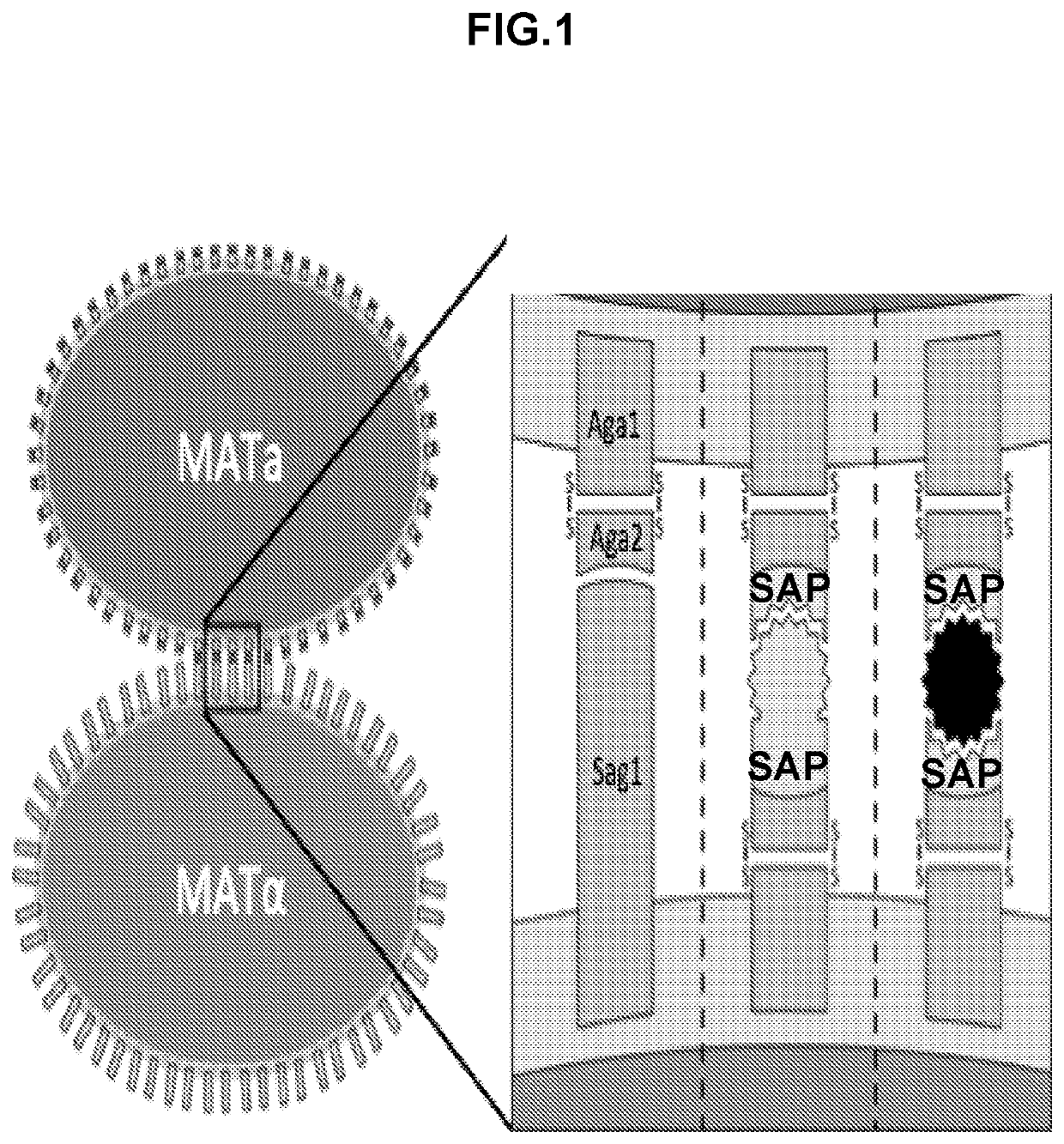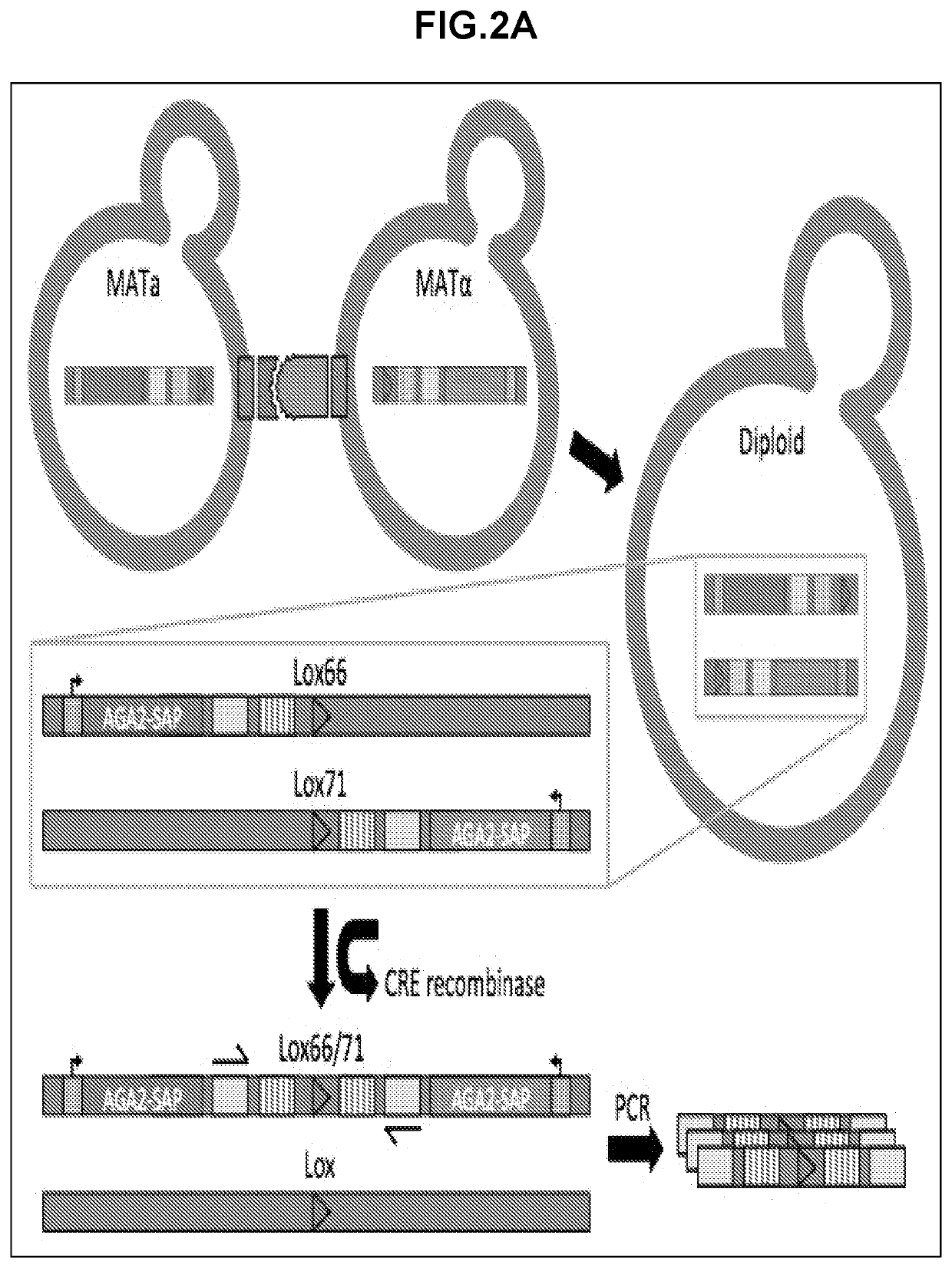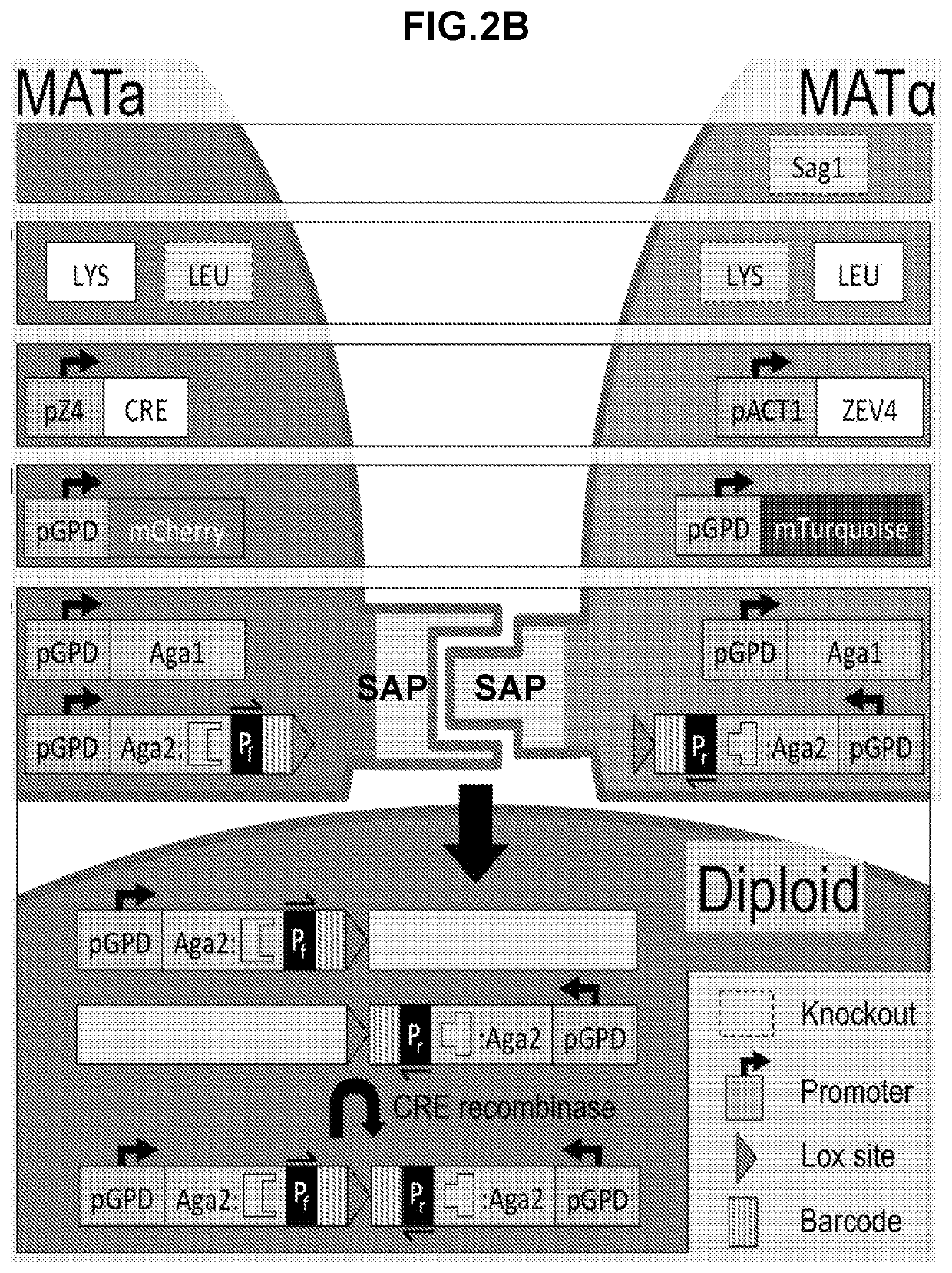High throughput protein-protein interaction screening in yeast liquid culture
a protein interaction and high throughput technology, applied in the field of high throughput proteinprotein interaction screening in yeast liquid culture, can solve the problems of lack of high throughput screening methods of protein interaction network design, inability to meet the needs of many modern protein engineering challenges, and limited role of sexual agglutinin proteins, etc., to achieve link protein interaction strength and mating efficiency. , the effect of high throughpu
- Summary
- Abstract
- Description
- Claims
- Application Information
AI Technical Summary
Benefits of technology
Problems solved by technology
Method used
Image
Examples
example 1
face Display for Library-On-Library Characterization of Protein Interactions
[0426]Construction of a yeast-mating assay for screening and / or determining protein-protein interactions and protein interaction networks. A flow-cytometry assay can be used to differentiate between MATa, MATalpha, and diploid cells. The native yeast sexual agglutinins have been replaced with surface displayed binders (SAPs), and mating efficiency was measured using flow-cytometry. A diploid chromosomal translocation system was developed to combine the genes for both binders onto a single chromosome such that next generation sequencing can be used to evaluate the mating frequency of a particular pair of binders in a large library.
[0427]While there are numerous cell-based assays to analyze extracellular binding between a library of proteins and a single target, only cell-free approaches have been developed for characterizing whole protein interaction networks in a single assay. This has meant time consuming a...
example 4
erable Pre-Zygotic Barrier as a Model for Reproductive Ecology
[0478]Re-engineer S. cerevisiae sexual agglutination in order to better understand how pre-zygotic barriers can influence ecological dynamics. In order to demonstrate that genetic isolation caused by mutations in the agglutinin proteins could alter ecological dynamics, complementary pairs of MATa and MATalpha cells undergo multiple rounds of mating and sporulation. Haploids expressing synthetic agglutinin proteins are used to model complex interspecies pre-zygotic barriers that would be impossible to quantify in higher-order organisms. The system is complemented with a predictive computational model.
[0479]Genetic variability within a species results in each individual having distinct but immeasurable likelihoods to sexually reproduce with each individual of the opposite mating type. Some variations may result in a decreased likelihood to mate with all other individuals and others may cause the formation of subsets of pref...
example 5
lasmid Cloning Scheme
[0490]Many of the yeast strains described in this disclosure required multiple transformations. Displayer strains compatible with the CRE recombinase assay, for example, required the integration of Aga1 under the control of a constitutive promoter, the knockout of a sexual agglutinin protein, the integration of a fluorescent reporter, the integration of CRE recombinase and GAVN or of HygMX and ZEV4, and the integration of a barcoded surface expression cassette with a lox site. For each integration, a plasmid must be constructed that contains the required yeast cassette, an E. coli resistance marker and origin of replication, and 5′ and 3′ regions of homology to the yeast genome for integration. As many plasmids are required, a modular yeast plasmid was designed to simplify the cloning workflow and allow for the reuse of fragments for multiple plasmids. Even so, the large number of transformations would require more selectable markers than available if each were ...
PUM
| Property | Measurement | Unit |
|---|---|---|
| temperatures | aaaaa | aaaaa |
| Tm | aaaaa | aaaaa |
| strength | aaaaa | aaaaa |
Abstract
Description
Claims
Application Information
 Login to View More
Login to View More - R&D
- Intellectual Property
- Life Sciences
- Materials
- Tech Scout
- Unparalleled Data Quality
- Higher Quality Content
- 60% Fewer Hallucinations
Browse by: Latest US Patents, China's latest patents, Technical Efficacy Thesaurus, Application Domain, Technology Topic, Popular Technical Reports.
© 2025 PatSnap. All rights reserved.Legal|Privacy policy|Modern Slavery Act Transparency Statement|Sitemap|About US| Contact US: help@patsnap.com



